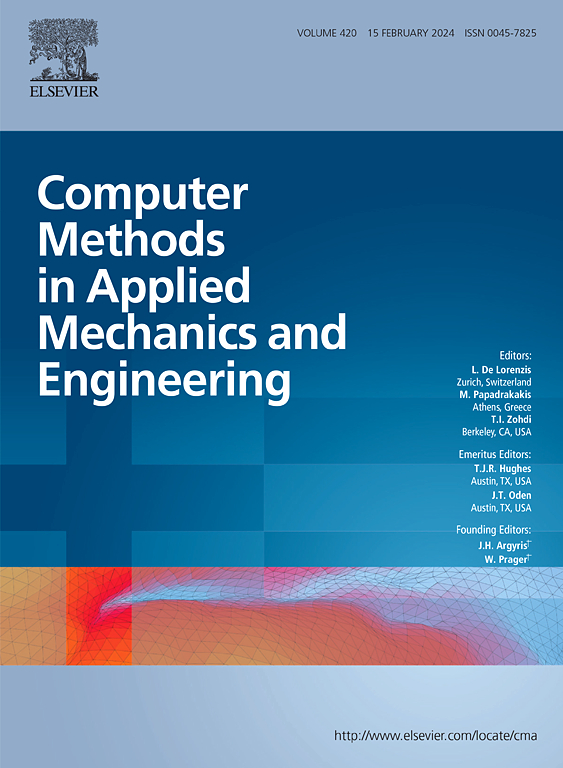Combination of intrusive POD-based reduced-order models and augmented Riemann solvers applied to unsteady 2D shallow water equations
IF 6.9
1区 工程技术
Q1 ENGINEERING, MULTIDISCIPLINARY
Computer Methods in Applied Mechanics and Engineering
Pub Date : 2024-12-30
DOI:10.1016/j.cma.2024.117702
引用次数: 0
Abstract
The shallow water equations (SWEs) can be used to model the spatio-temporal evolution of free surface flows. The numerical resolution of realistic problems based on the 2D SWEs by means of augmented Roe-based (ARoe) methods requires the inclusion of certain numerical corrections to avoid non-physical results in presence of irregular topography and wet dry fronts. Besides that, their complex and transient nature involves high computational costs. In this direction, intrusive reduced-order models (ROMs) based on the proper orthogonal decomposition (POD) are presented as alternative to speed up computational calculations without compromising the accuracy of the solutions. The main objective of this article is to study whether the inclusion of numerical corrections in the ROM strategy of the 2D SWEs for non trivial situations is necessary to obtain accurate solutions or not, and, if necessary, to present their reduced version. In addition to this, it is proposed to solve problems with Dirichlet-type boundary conditions (BCs) by means of ROMs using a technique whereby the BCs are directly integrated into the on-line phase of ROM solving. The efficiency of the ARoe-based ROM has been tested with respect to the full-order model by comparing their computational cost and the accuracy of their solutions in different numerical cases.
基于侵入式pod的降阶模型与增广Riemann解的组合求解非定常二维浅水方程
浅水方程(SWEs)可以用来模拟自由水面流动的时空演变。基于二维swe的增强型roe (ARoe)方法对实际问题进行数值求解,需要包含一定的数值修正,以避免不规则地形和干湿锋存在时的非物理结果。此外,它们的复杂性和瞬态性涉及高计算成本。在这个方向上,基于适当正交分解(POD)的侵入式降阶模型(ROMs)被提出作为在不影响解的准确性的情况下加快计算计算的替代方案。本文的主要目的是研究在非琐碎情况下2D ses的ROM策略中包含数值修正是否有必要获得准确的解,并且,如果有必要,给出它们的简化版本。除此之外,还提出了一种将dirichlet型边界条件(bc)直接集成到ROM求解的在线阶段的技术,通过ROM来解决具有dirichlet型边界条件(bc)的问题。通过比较全阶模型的计算成本和不同数值情况下解的精度,验证了基于aroe的ROM的效率。
本文章由计算机程序翻译,如有差异,请以英文原文为准。
求助全文
约1分钟内获得全文
求助全文
来源期刊
CiteScore
12.70
自引率
15.30%
发文量
719
审稿时长
44 days
期刊介绍:
Computer Methods in Applied Mechanics and Engineering stands as a cornerstone in the realm of computational science and engineering. With a history spanning over five decades, the journal has been a key platform for disseminating papers on advanced mathematical modeling and numerical solutions. Interdisciplinary in nature, these contributions encompass mechanics, mathematics, computer science, and various scientific disciplines. The journal welcomes a broad range of computational methods addressing the simulation, analysis, and design of complex physical problems, making it a vital resource for researchers in the field.

 求助内容:
求助内容: 应助结果提醒方式:
应助结果提醒方式:


